Search Result
Results for "
Nav1.7- Inhibitor
" in MedChemExpress (MCE) Product Catalog:
| Cat. No. |
Product Name |
Target |
Research Areas |
Chemical Structure |
-
- HY-13985
-
|
|
Sodium Channel
|
Neurological Disease
|
|
Nav1.7 inhibitor (compound II), a sulfonamide, is a potent Nav1.7 inhibitor. Nav1.7 inhibitor has the potential for a wide range of disorders, particularly pain .
|
-

-
- HY-119934
-
|
|
Sodium Channel
|
Neurological Disease
|
|
NaV1.7 inhibitor-1 is an efficacious voltage-gated sodium channel (NaV) 1.7 inhibitor with an IC50 of 0.6 nM for hNaV1.7, exhibits 80-fold selectivity versus hNaV1.5 .
|
-
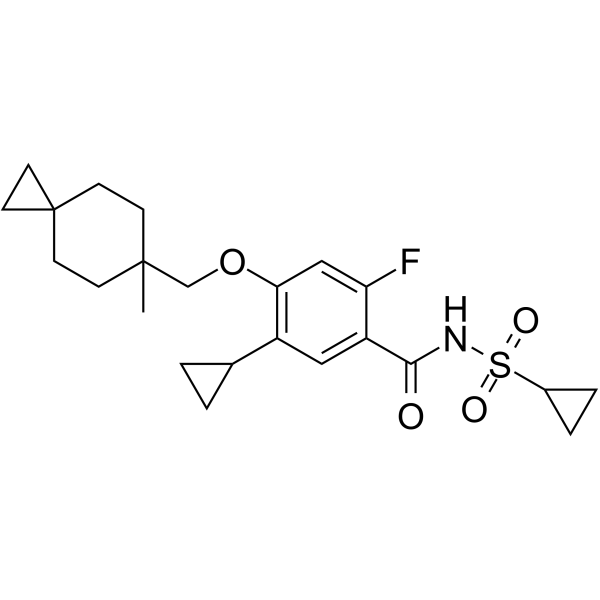
-
- HY-103623
-
-
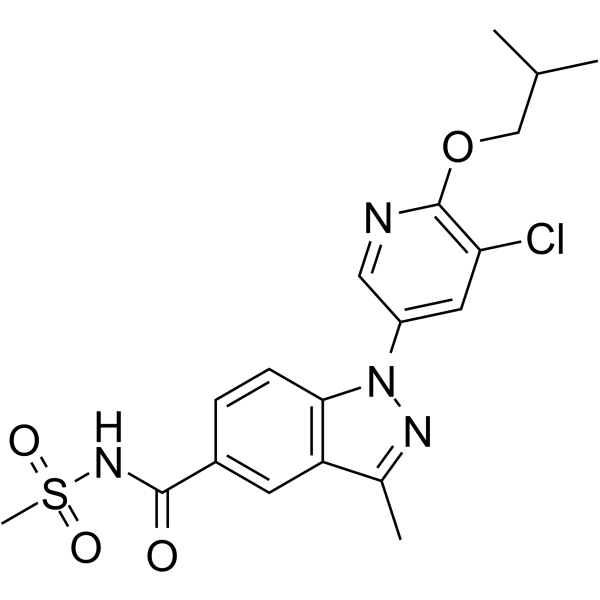
-
- HY-100727
-
-

-
- HY-12811
-
|
|
Sodium Channel
|
Neurological Disease
|
|
PF-04856264 is a potent and selective Nav1.7 inhibitor, with IC50s of 28, 131, 19, and 42 nM for human, mouse, cynomolgus monkey and dog Nav1.7, respectively. PF-04856264 has low potency against the rat Nav1.7 channel. PF-04856264 shows analgesic effect .
|
-

-
- HY-102998
-
-
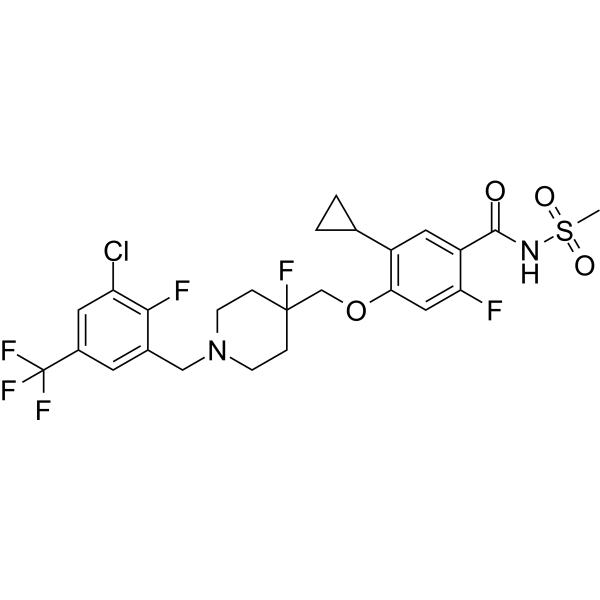
-
- HY-141547
-
|
|
Sodium Channel
Cytochrome P450
|
Inflammation/Immunology
|
|
Nav1.7-IN-8 is a potent blockage of NaV1.7 with high selectivity for the inhibition of NaV1.7 over the subtypes hNaV1.1 and hNaV1.5. Nav1.7-IN-8 inhibits CYP2C9 and CYP3A4 with an IC50 of 0.17 μM and 0.077 μM, respectively. Nav1.7-IN-8 displays significant analgesic effects in rodent models of acute and inflammatory pain .
|
-
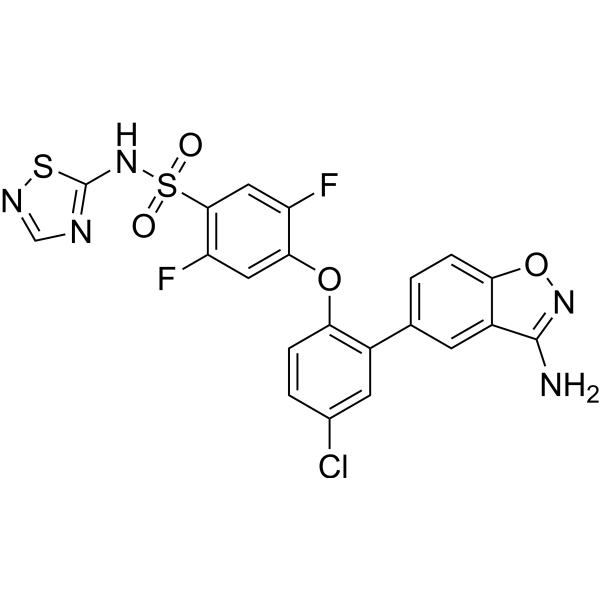
-
- HY-16723
-
-
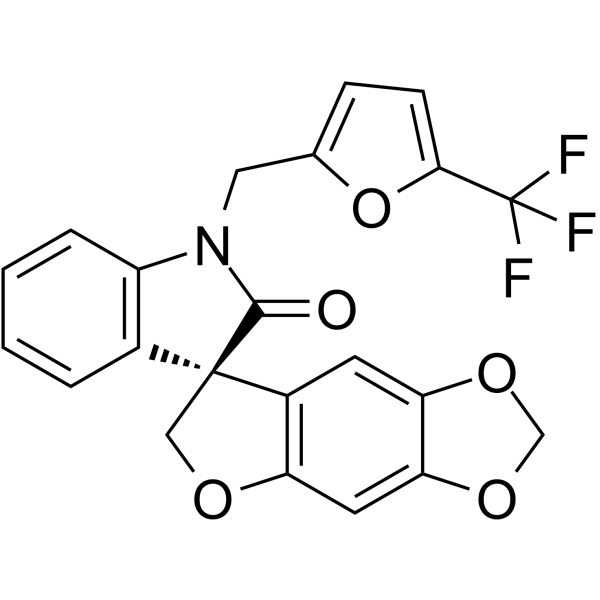
-
- HY-101789
-
|
|
Sodium Channel
|
Neurological Disease
|
|
Nav1.7-IN-3 is a selective, orally bioavailable voltage-gated sodium channel Nav1.7 inhibitor with an IC50 of 8 nM. Pain relief. Limited CNS penetration .
|
-
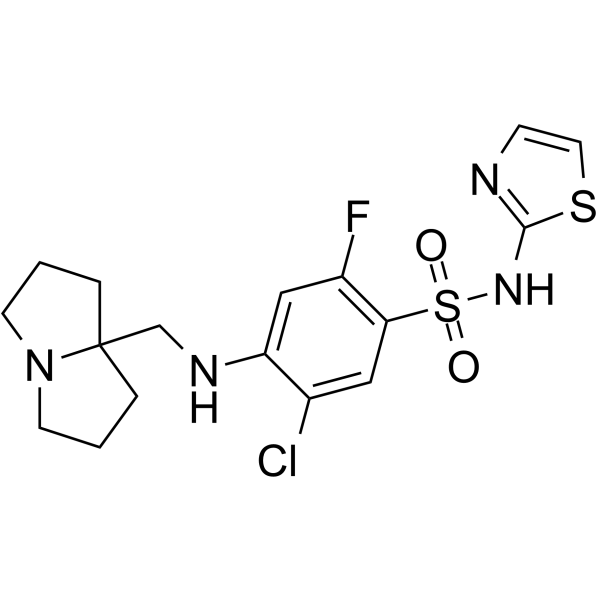
-
- HY-112279
-
-
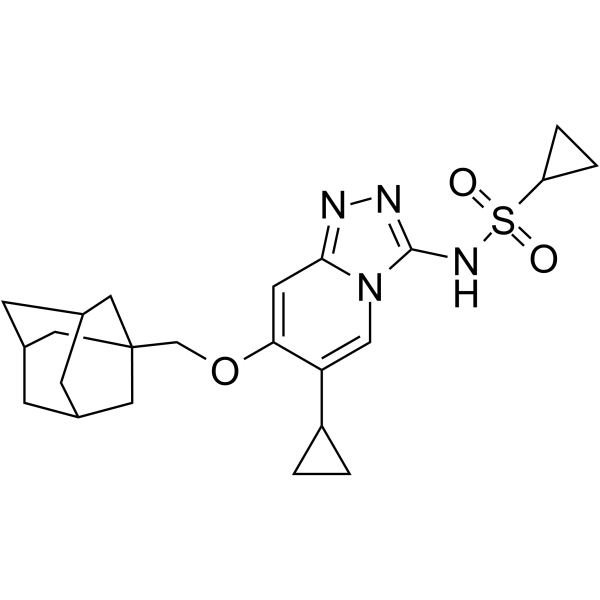
-
- HY-145169
-
|
|
Sodium Channel
|
Neurological Disease
|
|
AZ194 is a first-in-class, orally active inhibitor of CRMP2-Ubc9 interaction and inhibitor of NaV1.7 (IC50=1.2 μM). AZ194 blocks SUMOylation of CRMP2 to selectively reduce the amount of surface-expressed NaV1.7. Antinociceptive effects .
|
-
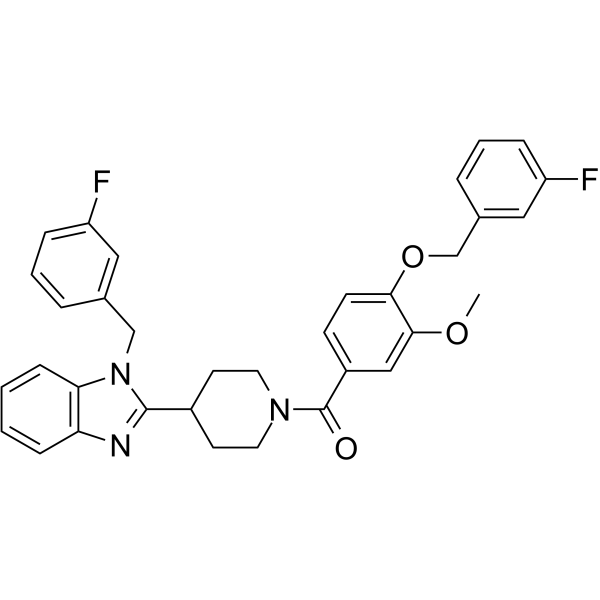
-
- HY-P1221
-
|
|
Sodium Channel
|
Neurological Disease
|
|
ProTx II is a selective blocker of Nav1.7 sodium channels with an IC50 of 0.3 nM, and is at least 100-fold selective for Nav1.7 over other sodium channel subtypes. ProTx-II inhibits sodium channels by decreasing channel conductance and shifting activation to more positive potentials and blocks action potential propagation in nociceptors .
|
-

-
- HY-P1221A
-
|
|
Sodium Channel
|
Neurological Disease
|
|
ProTx II TFA is a selective blocker of Nav1.7 sodium channels with an IC50 of 0.3 nM, and is at least 100-fold selective for Nav1.7 over other sodium channel subtypes. ProTx-II inhibits sodium channels by decreasing channel conductance and shifting activation to more positive potentials and blocks action potential propagation in nociceptors .
|
-

-
- HY-12796
-
|
Vixotrigine; GSK-1014802; CNV1014802
|
Sodium Channel
|
Neurological Disease
|
|
Raxatrigine (GSK-1014802) is a novel small molecule state-dependent sodium channel blocker; Nav1.7 sodium channel inhibitor.
|
-
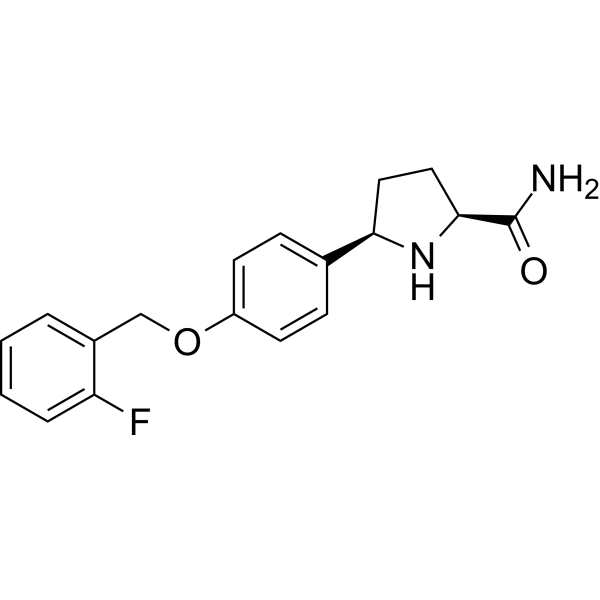
-
- HY-12796A
-
|
Vixotrigine hydrochloride; GSK-1014802 hydrochloride; CNV1014802 hydrochloride
|
Sodium Channel
|
Neurological Disease
|
|
Raxatrigine hydrochloride (GSK-1014802 hydrochloride) is a novel small molecule state-dependent sodium channel blocker; Nav1.7 sodium channel inhibitor.
|
-
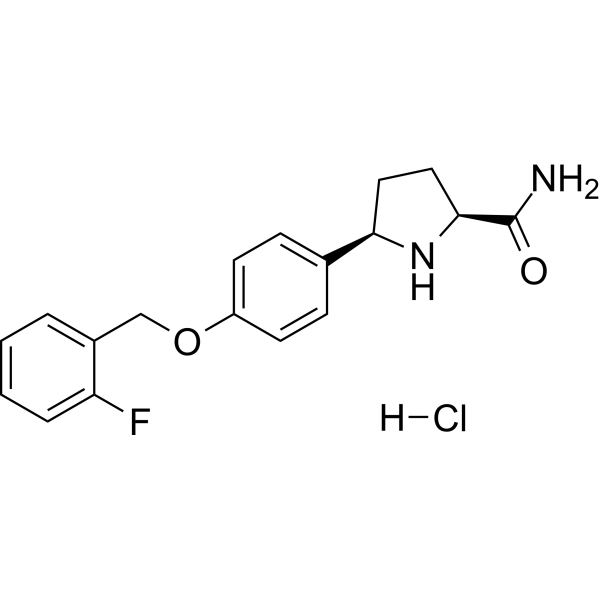
-
- HY-131870
-
-
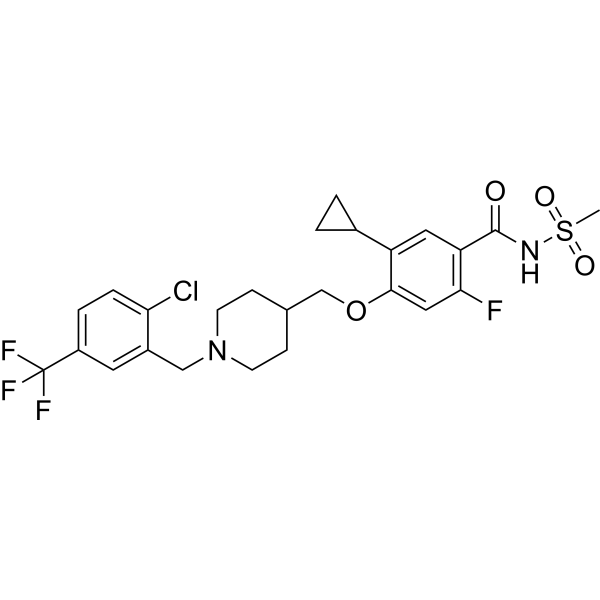
-
- HY-139081
-
-
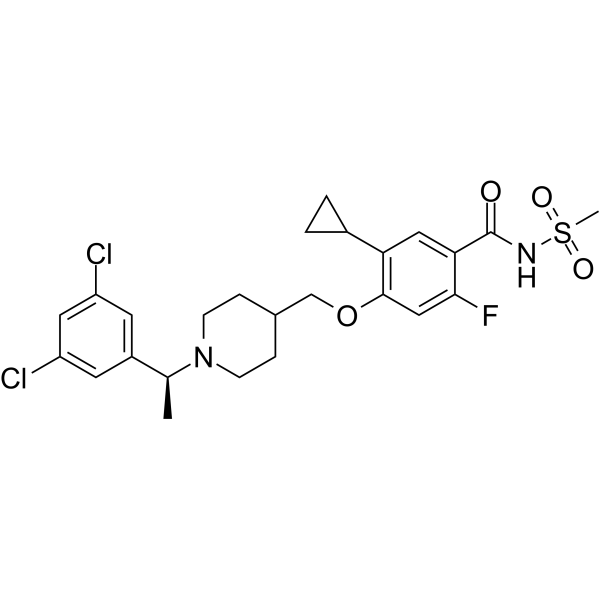
-
- HY-P5809
-
-
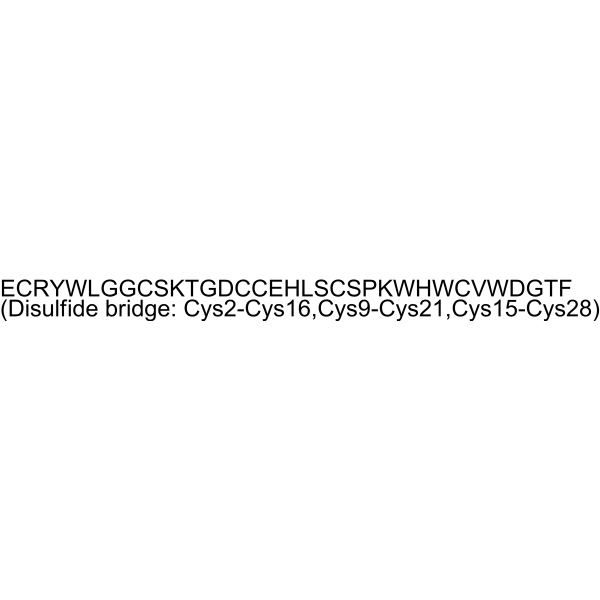
-
- HY-155236
-
-
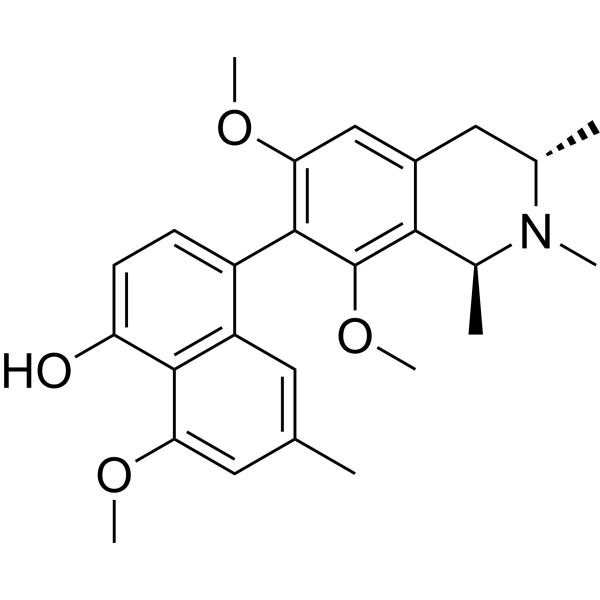
-
- HY-122001
-
|
|
Sodium Channel
|
Neurological Disease
|
|
PF-05186462 is a potent and selective inhibitor of human Nav1.7 voltage-dependent sodium channel, with an IC50 of 21 nM. PF-05186462 shows significant selectivity for Nav1.7 versus other sodium channels (Nav 1.1, 1.2, 1.3, 1.4, 1.5, 1.6, and 1.8). PF-05186462 can be used for the research of acute or chronic pain .
|
-
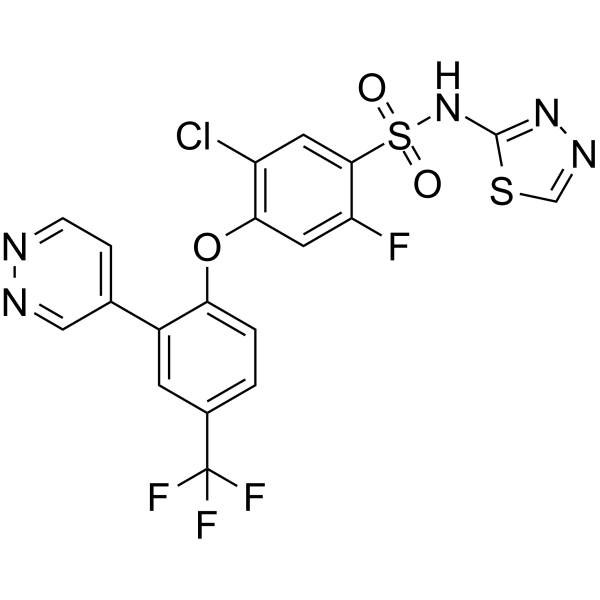
-
- HY-118952
-
|
|
Sodium Channel
|
Neurological Disease
|
|
PF-06456384 is a highly potent and selective NaV1.7 inhibitor with an IC50 of 0.01 nM. PF-06456384 has the potential for formalin pain model research .
|
-

-
- HY-118952A
-
|
|
Sodium Channel
|
Neurological Disease
|
|
PF-06456384 trihydrochloride is a highly potent and selective NaV1.7 inhibitor with an IC50 of 0.01 nM. PF-06456384 trihydrochloride has the potential for formalin pain model research .
|
-
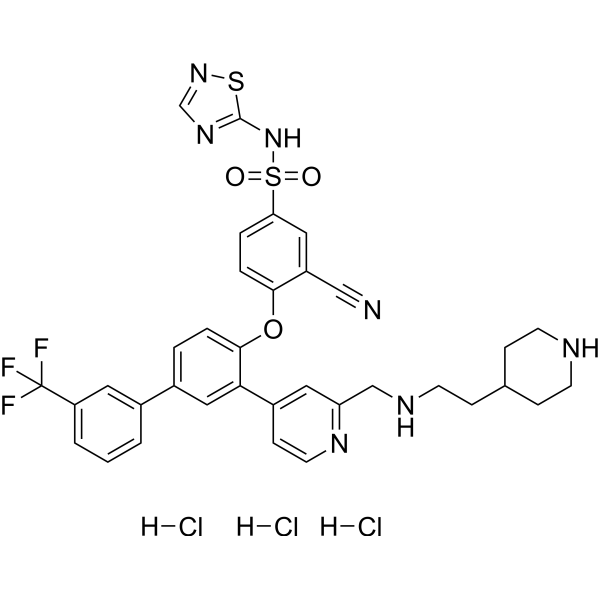
-
- HY-12883A
-
|
|
Sodium Channel
|
Neurological Disease
|
|
PF-05198007 is a potent, orally active and selective arylsulfonamide Nav1.7 inhibitor. PF-05198007 is a compound with a similar pharmacodynamic profile to PF-05089771 .
|
-
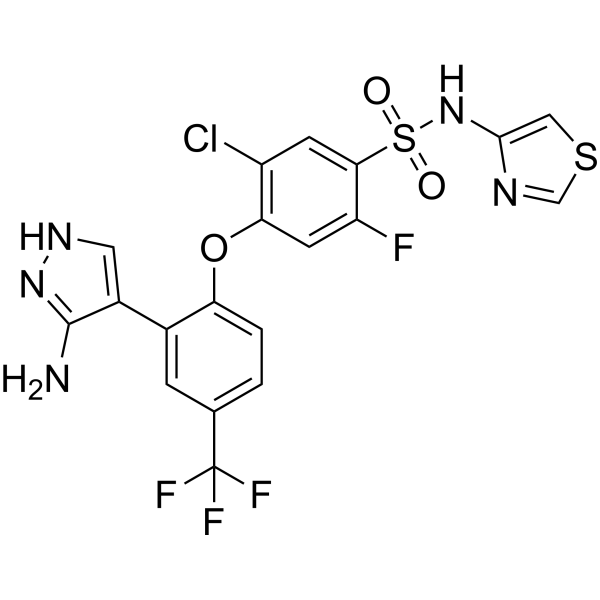
-
- HY-P1220
-
|
|
Sodium Channel
|
Neurological Disease
|
|
Huwentoxin-IV is a potent and selective sodium channel blocker, inhibits neuronal Nav1.7, Nav1.2, Nav1.3 and Nav1.4 with IC50s of 26, 150, 338 and 400 nM, respectively. Huwentoxin-IV preferentially blocks peripheral nerve subtype Nav1.7 by binding neurotoxin receptor site 4. Huwentoxin-IV has analgesic effects on animal models of inflammatory and neuropathic pain .
|
-
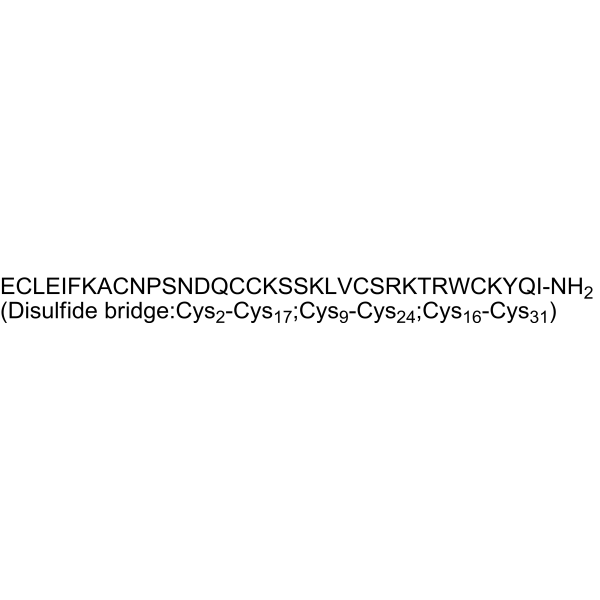
-
- HY-P1220A
-
|
|
Sodium Channel
|
Neurological Disease
|
|
Huwentoxin-IV TFA is a potent and selective sodium channel blocker, inhibits neuronal Nav1.7, Nav1.2, Nav1.3 and Nav1.4 with IC50s of 26, 150, 338 and 400 nM, respectively. Huwentoxin-IV TFA preferentially blocks peripheral nerve subtype Nav1.7 by binding neurotoxin receptor site 4. Huwentoxin-IV TFA has analgesic effects on animal models of inflammatory and neuropathic pain .
|
-
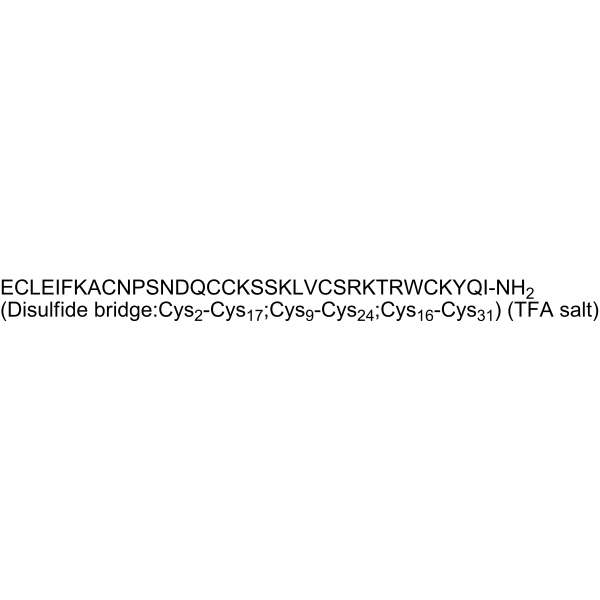
-
- HY-P5793
-
-

-
- HY-19958
-
|
|
|
|
|
XEN907 is a potent and spirooxindole blocker of NaV1.7, with an IC50 of 3 nM. XEN907 also inhibits CYP3A4 in a recombinant human enzyme assay. XEN907 can be used for the research of pain .
|
-

-
- HY-P5786
-
-
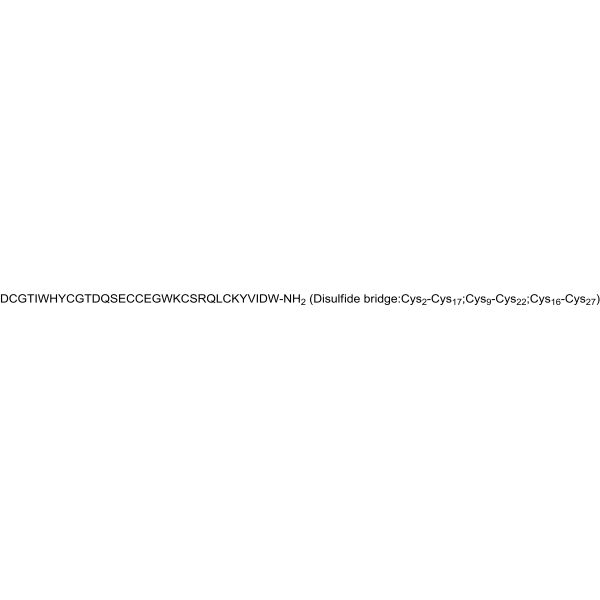
-
- HY-P5865
-
|
Theraphotoxin-Tap1a; TRTX-Tap1a; µ/ω-TRTX-Tap1a
|
Sodium Channel
|
Neurological Disease
|
|
Tap1a (Theraphotoxin-Tap1a) is a spider venom peptide that inhibits sodium channels with IC50s of 80 nM and 301 nM against Nav1.7 and Nav1.1, respectively. Tap1a shows analgesic effects .
|
-
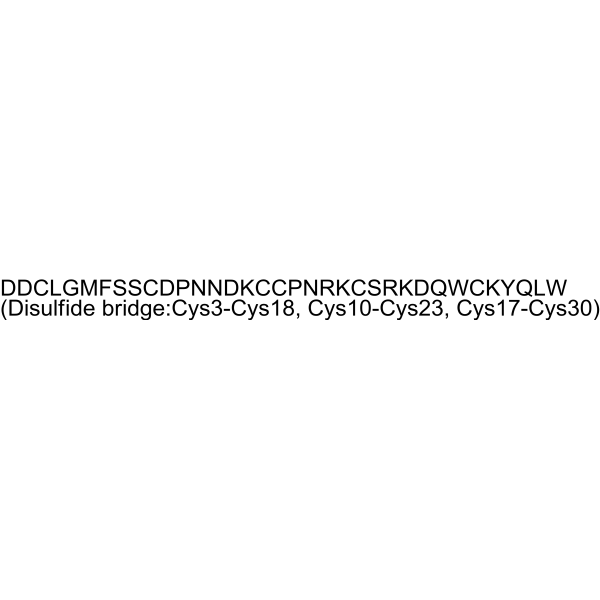
-
- HY-P5160
-
|
PhlTx1
|
Sodium Channel
|
Inflammation/Immunology
|
|
Phlotoxin-1 (PhlTx1) is a 34-amino acid and 3-disulfide bridge peptide. Phlotoxin-1 can be isolated from Phlogiellus genus spider. Phlotoxin-1 is an antinociceptive agent by inhibiting NaV1.7 channel .
|
-

-
- HY-N1847
-
|
|
Sodium Channel
|
Neurological Disease
|
|
3'-Methoxydaidzein is a isoflavone and a Sodium Channel inhibitor. 3'-Methoxydaidzein inhibits subtypes NaV1.7, NaV1.8 and NaV1.3 with IC50 of 181 nM, 397 nM, and 505 nM, respectively. 3'-Methoxydaidzein exerts analgesic activity by inhibiting voltage-gated sodium channels .
|
-
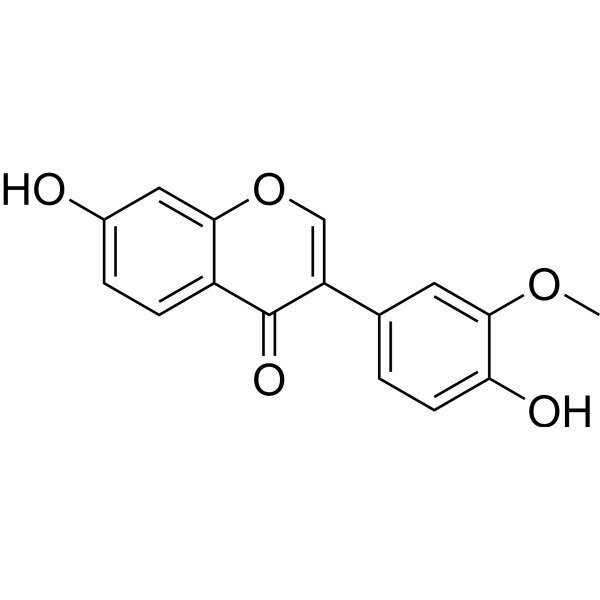
-
- HY-131182
-
|
|
Sodium Channel
|
Neurological Disease
|
|
DS-1971a is a potent, selective, and orally active NaV1.7 inhibitor, with IC50s of 22.8 and 59.4 nM for hNaV1.7 and mNaV1.7, respectively. DS-1971a exerts analgesic effects .
|
-
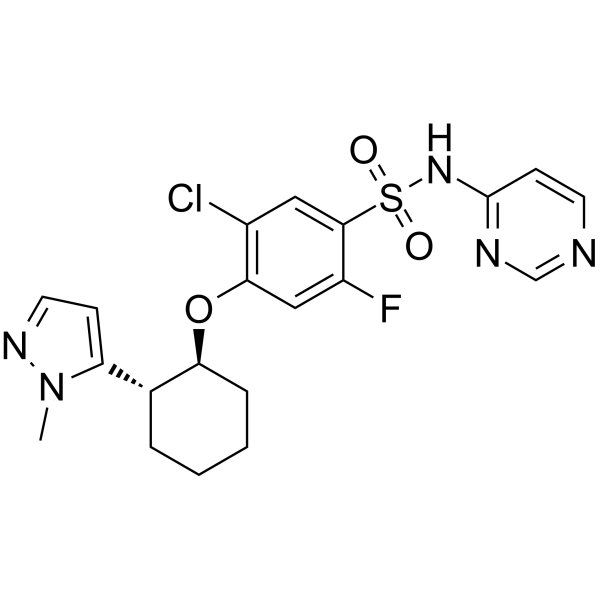
-
- HY-N6691
-
|
3-Veratroylveracevine
|
Sodium Channel
|
Neurological Disease
|
|
Veratridine (3-Veratroylveracevine) is a plant neurotoxin, a voltage-gated sodium channels (VGSCs) agonist. Veratridine inhibits the peak current of Nav1.7, with an IC50 of 18.39 µM. Veratridine regulates sodium ion channels mainly by activating sodium ion channels, preventing channel inactivation and increasing sodium ion flow .
|
-
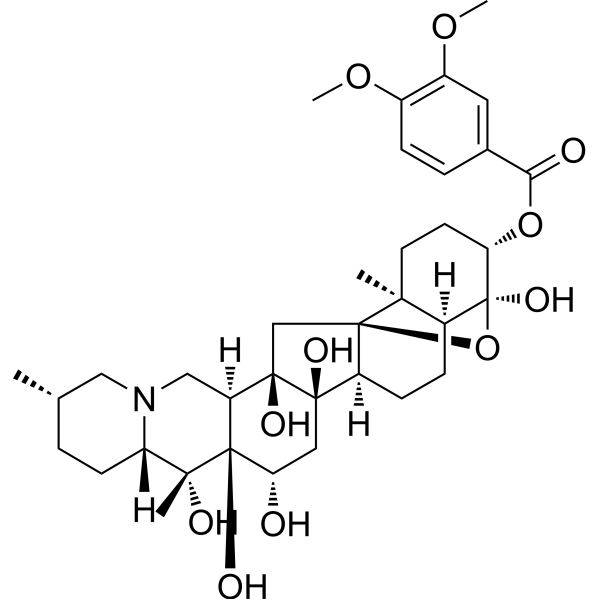
-
- HY-P5801
-
|
μ-TrTx-Phlo1a
|
Sodium Channel
|
Neurological Disease
|
|
Phlo1a (μ-TrTx-Phlo1a) is a peptide toxin contains 35-amino acid residues. Phlo1b is a selective Nav1.7 inhibitor. Phlo1a has a weak inhibitory effect on Nav1.2 and Nav1.5 .
|
-

-
- HY-P5800
-
|
μ-TrTx-Phlo1b
|
Sodium Channel
|
Neurological Disease
|
|
Phlo1b (μ-TrTx-Phlo1b) is a peptide toxin contains 35-amino acid residues. Phlo1b is a selective Nav1.7 inhibitor. Phlo1b has a weak inhibitory effect on Nav1.2 and Nav1.5 .
|
-
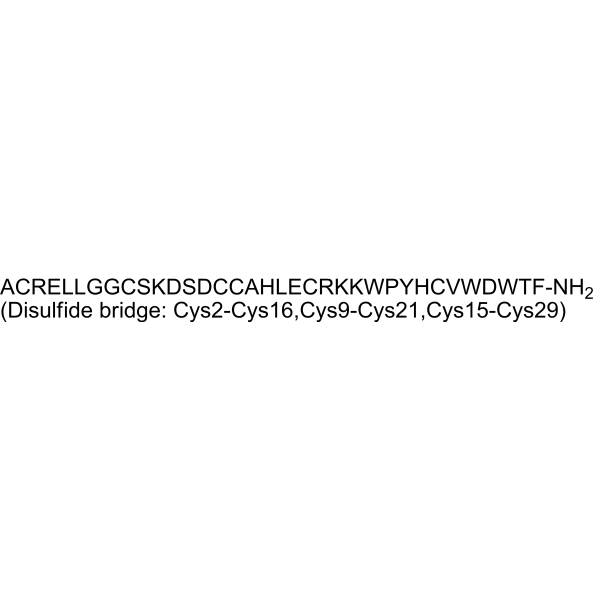
-
- HY-P5781
-
|
|
Sodium Channel
|
Neurological Disease
|
|
δ-Theraphotoxin-Hm1b is a 42-amino acid peptide isolated from Togo starburst tarantula (Heteroscodra maculata) venom. δ-Theraphotoxin-Hm1b selectively inhibits inactivation of NaV1.1 but have no effect on NaV1.7 .
|
-
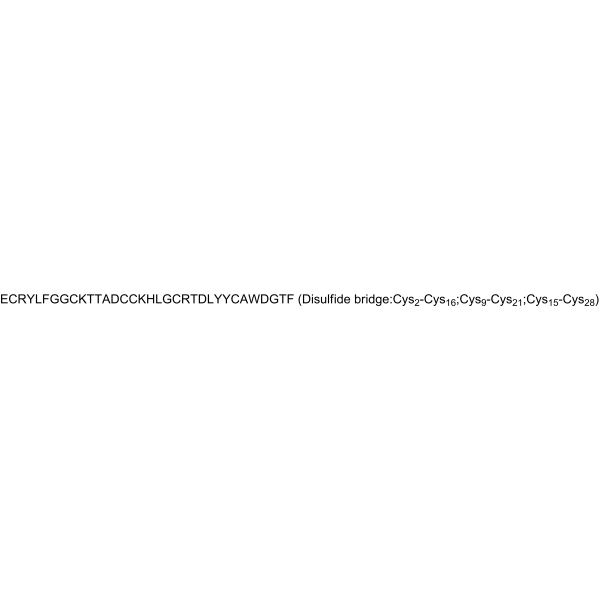
-
- HY-114237
-
|
|
Sodium Channel
|
Neurological Disease
|
|
GDC-0276 is a potent, selective, reversible and orally active NaV1.7 inhibitor with an IC50 value of 0.4 nM. GDC-0276 is well tolerated and exhibits a good pharmacokinetic profile. GDC-0276 has the potential for the treatment of pain and to address shortcomings of existing pain medications, such as addiction and off-target side effects .
|
-
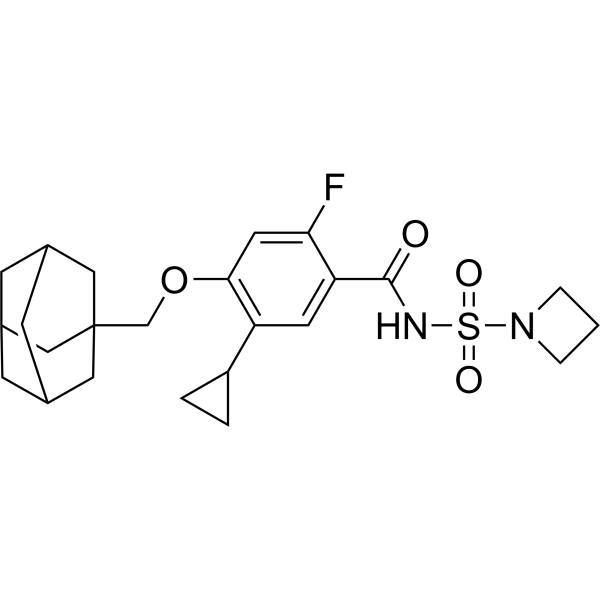
-
- HY-108425A
-
|
|
Sodium Channel
|
Neurological Disease
|
|
AMG8380, an orally active and less active enantiomer of AMG8379, can serves as a negative control. AMG8380 inhibits human and mouse voltage-gated sodium channel NaV1.7 with IC50s of 0.907 and 0.387 μM, respectively. AMG8380 blocks Tetrodotoxin (TTX)-sensitive native channels with an IC50 of 2560 nM .
|
-
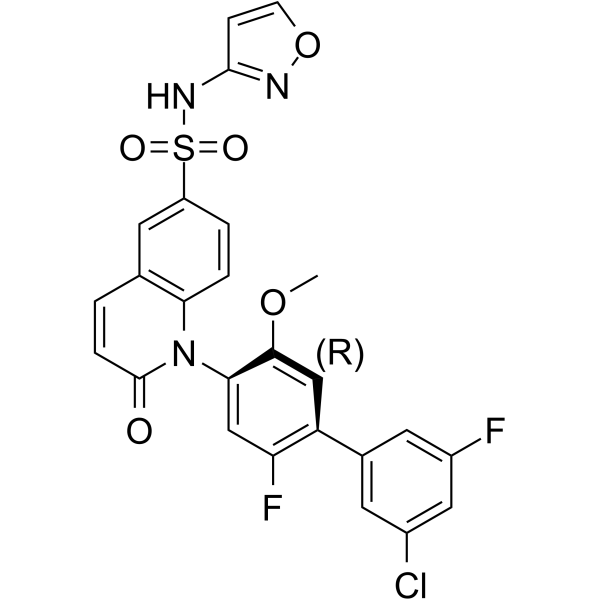
-
- HY-149994
-
|
|
Sodium Channel
|
Neurological Disease
|
|
DS43260857 is a potentNaV1.7inhibitor, which has a high inhibitory effect on both human and mouse NaV1.7. The IC50 values of DS43260857 for hNaV1.1, hNaV1.5, hNaV1.7, mNaV1.7 are 6.6, 14, 0.015 and 0.061 μM, respectively .
|
-
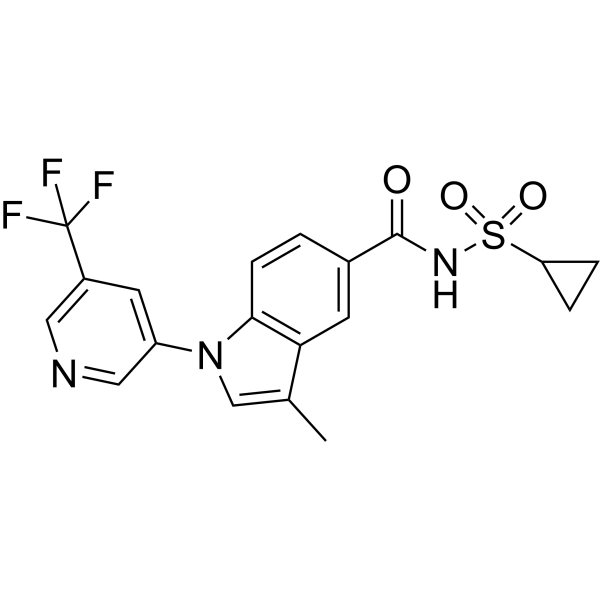
-
- HY-12883
-
|
|
Sodium Channel
|
Neurological Disease
|
|
PF 05089771 is a potent, orally active and selective arylsulfonamide Nav1.7 inhibitor, with IC50 values of 11 nM, 12 nM, 13 nM, 171 nM and 8 nM for hNav1.7, cynNav1.7, dogNav1.7, ratNav1.7, and musNav1.7, respectively. PF 05089771 is under the study for pain and diabetic neuropathy .
|
-

-
- HY-12883B
-
|
|
Sodium Channel
|
Neurological Disease
|
|
PF 05089771 tosylate is a potent, orally active and selective arylsulfonamide Nav1.7 inhibitor, with IC50 values of 11 nM, 12 nM, 13 nM, 171 nM and 8 nM for hNav1.7, cynNav1.7, dogNav1.7, ratNav1.7, and musNav1.7, respectively. PF 05089771 is under the study for pain and diabetic neuropathy .
|
-
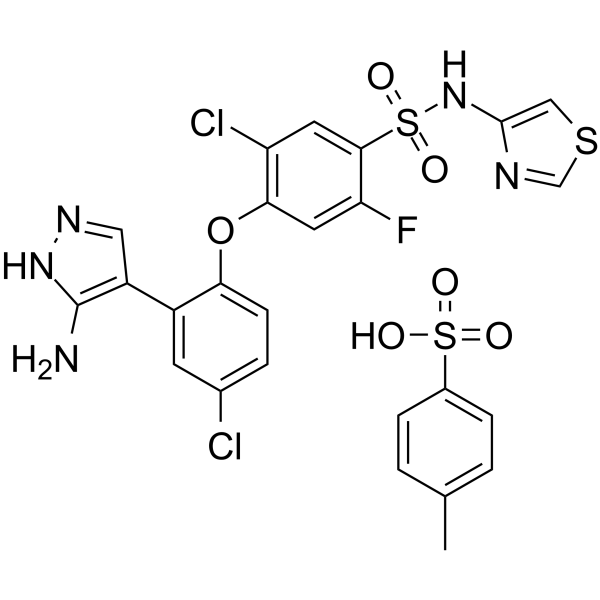
-
- HY-P5153
-
|
μ-TRTX-Tp1a
|
Sodium Channel
|
Neurological Disease
|
|
ProTx-III is a selective and potent inhibitor of voltage-gated sodium channel Nav1.7, with an IC50 of 2.1 nM. ProTx-III is a spider venom peptide isolated from the venom of the Peruvian green velvet tarantella. ProTx-III has a typical inhibitor cystine knot motif (ICK). ProTx-III is able to reverse the pain response. ProTx-III can be used to study diseases such as chronic pain, epilepsy, and arrhythmia .
|
-
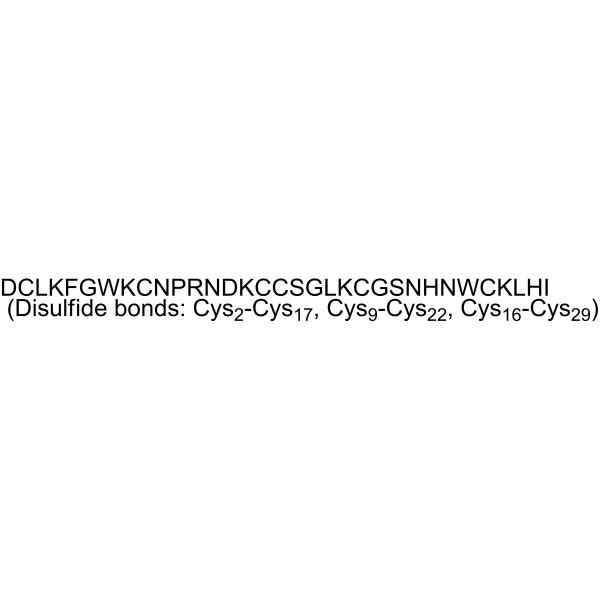
-
- HY-19366
-
|
|
|
|
|
Nav1.7-IN-2 is an inhibitor of voltage-gated sodium channels (Nav), in particular Nav 1.7, with IC50 of 80 nM.
|
-

-
- HY-107405
-
|
|
Sodium Channel
|
Neurological Disease
|
|
TC-N 1752 is a potent and orally active inhibitor of Nav1.7, with IC50s of 0.17 μM, 0.3 μM, 0.4 μM, 1.1 μM and 2.2 μM at hNav1.7, hNav1.3, hNav1.4, hNaV1.5 and rNav1.8, respectively. TC-N 1752 also inhibits tetrodotoxin-sensitive sodium channels. TC-N 1752 shows analgesic efficacy in the Formalin model of pain .
|
-
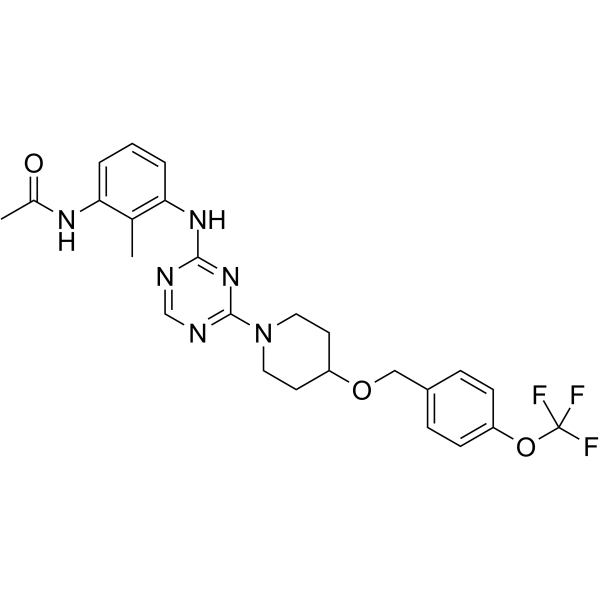
-
- HY-126291
-
|
|
Sodium Channel
|
Neurological Disease
|
|
GNE-616 is a highly potent, metabolically stable, orally bioavailable, and subtype selective Nav1.7 inhibitor (Ki of 0.79 nM and Kd of 0.38 nM for hNav1.7) for the treatment of chronic pain. GNE-616 shows >1000 nM Kd and >2500-fold selectivity over hNav1.1, hNav1.3, hNav1.4, and hNav1.5. Selectivity over hNav1.2 and hNav1.6 is more modest at 31- and 73-fold, respectively .
|
-
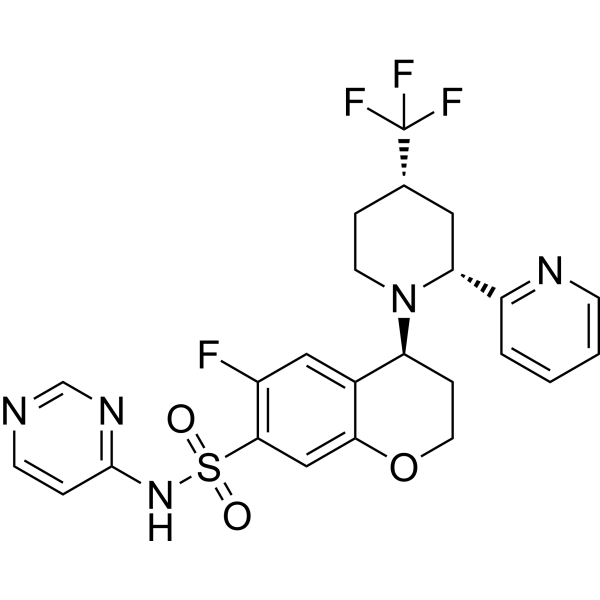
-
- HY-P5900
-
|
m3-HwTx-IV
|
Sodium Channel
|
Neurological Disease
|
|
m3-Huwentoxin IV (m3-HwTx-IV) is a potent NaV inhibitor with IC50s of 3.3, 6.8, 7.2, 8.4, 11.9 and 369 nM against hNaV1.7, hNaV1.6, hNaV1.3, hNaV1.1, hNaV1.2 and hNaV1.4, respectively in QPatch assay. m3-Huwentoxin IV dose-dependently suppresses spontaneous pain induced by the NaV1.7 activator OD1 in a rodent pain model .
|
-
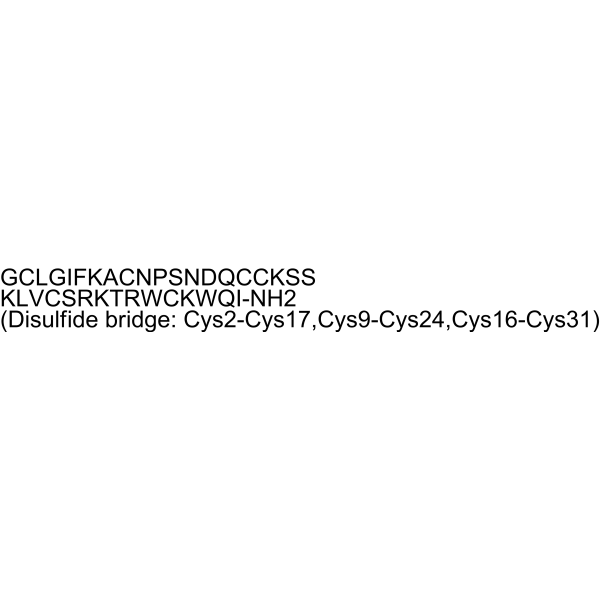
-
- HY-162347
-
|
|
Sodium Channel
|
Neurological Disease
|
|
Nav1.7-IN-13 (compound 3g) is a sodium channel inhibitor that significantly inhibits Veratridine (HY-N6691)-induced neuronal activity. Nav1.7-IN-13 inhibits total Na+ current in DRG neurons in a concentration-dependent manner; slows down the activation of Navs. Nav1.7-IN-13 significantly alleviated mechanical pain behavior in a rat model of nerve injury (SNI) and had analgesic activity .
|
-
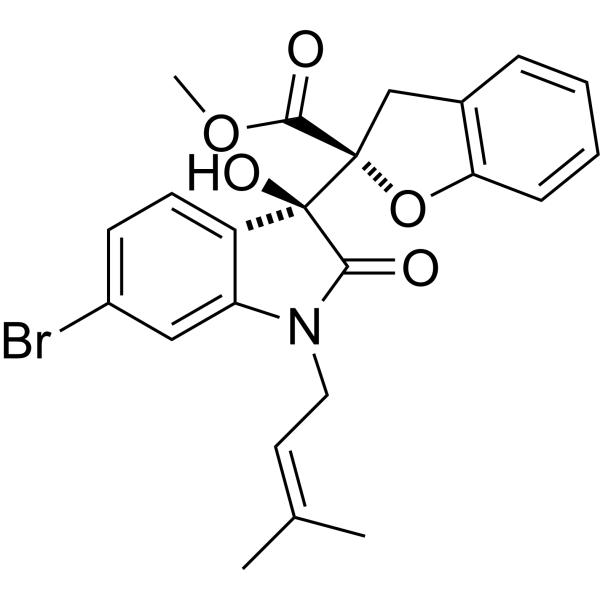
-
- HY-P5790
-
|
|
Sodium Channel
|
Neurological Disease
|
|
μ-TRTX-Hd1a, a spider venom, is a selective NaV 1.7 inhibitor. μ-TRTX-Hd1a is a gating modifier that inhibits human NaV 1.7 by interacting with the S3b-S4 paddle motif in channel domain II .
|
-

-
- HY-123824
-
|
|
Sodium Channel
|
Neurological Disease
|
|
GNE-0439 is a novel Nav1.7-selective inhibitor with IC50 of 0.34 uM and inhibits Nav1.5 with an IC50 of 38.3 μM. GNE-0439 inhibits mutant N1742K channels (IC50=0.37 uM) in membrane potential assays. GNE-0439 possesses a carboxylic acid group, binds outside of the channel pore, and is unique compared with known selective VSD4 binders .
|
-

-
- HY-157802
-
|
|
Sodium Channel
|
Neurological Disease
|
|
LTGO-33 is a potent and selective voltage-gated sodium channel NaV1.8 inhibitor. LTGO-33 inhibits NaV1.8 in the nM potency range and exhibits over 600-fold selectivity against human NaV1.1-NaV1.7 and NaV1.9. LTGO-33 exhibits state-independent inhibition with similar potencies on channels in the closed and inactivated conformations. LTGO-33 inhibits native TTX-R NaV1.8 currents in non-human primate and human DRG neurons, where it reduces action potential firing. LTGO-33 can be used for pain disorders research .
|
-
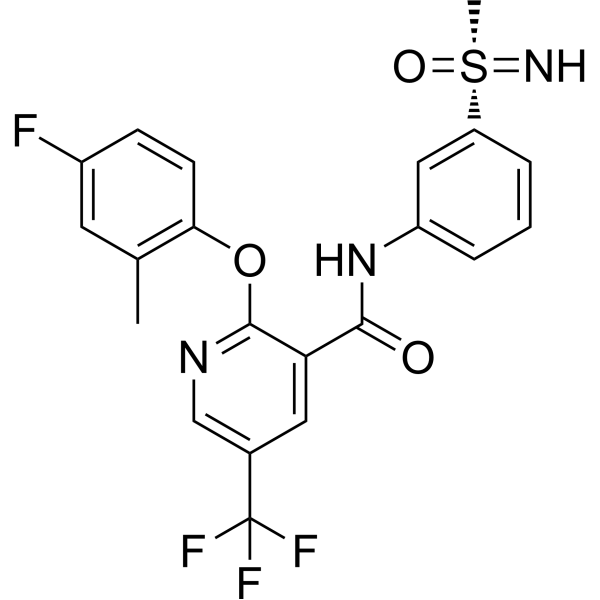
| Cat. No. |
Product Name |
Target |
Research Area |
-
- HY-P1221A
-
|
|
Sodium Channel
|
Neurological Disease
|
|
ProTx II TFA is a selective blocker of Nav1.7 sodium channels with an IC50 of 0.3 nM, and is at least 100-fold selective for Nav1.7 over other sodium channel subtypes. ProTx-II inhibits sodium channels by decreasing channel conductance and shifting activation to more positive potentials and blocks action potential propagation in nociceptors .
|
-
- HY-P1221
-
|
|
Sodium Channel
|
Neurological Disease
|
|
ProTx II is a selective blocker of Nav1.7 sodium channels with an IC50 of 0.3 nM, and is at least 100-fold selective for Nav1.7 over other sodium channel subtypes. ProTx-II inhibits sodium channels by decreasing channel conductance and shifting activation to more positive potentials and blocks action potential propagation in nociceptors .
|
-
- HY-P5809
-
-
- HY-P1220
-
|
|
Sodium Channel
|
Neurological Disease
|
|
Huwentoxin-IV is a potent and selective sodium channel blocker, inhibits neuronal Nav1.7, Nav1.2, Nav1.3 and Nav1.4 with IC50s of 26, 150, 338 and 400 nM, respectively. Huwentoxin-IV preferentially blocks peripheral nerve subtype Nav1.7 by binding neurotoxin receptor site 4. Huwentoxin-IV has analgesic effects on animal models of inflammatory and neuropathic pain .
|
-
- HY-P1220A
-
|
|
Sodium Channel
|
Neurological Disease
|
|
Huwentoxin-IV TFA is a potent and selective sodium channel blocker, inhibits neuronal Nav1.7, Nav1.2, Nav1.3 and Nav1.4 with IC50s of 26, 150, 338 and 400 nM, respectively. Huwentoxin-IV TFA preferentially blocks peripheral nerve subtype Nav1.7 by binding neurotoxin receptor site 4. Huwentoxin-IV TFA has analgesic effects on animal models of inflammatory and neuropathic pain .
|
-
- HY-P5793
-
-
- HY-P5786
-
-
- HY-P5865
-
|
Theraphotoxin-Tap1a; TRTX-Tap1a; µ/ω-TRTX-Tap1a
|
Sodium Channel
|
Neurological Disease
|
|
Tap1a (Theraphotoxin-Tap1a) is a spider venom peptide that inhibits sodium channels with IC50s of 80 nM and 301 nM against Nav1.7 and Nav1.1, respectively. Tap1a shows analgesic effects .
|
-
- HY-P5160
-
|
PhlTx1
|
Sodium Channel
|
Inflammation/Immunology
|
|
Phlotoxin-1 (PhlTx1) is a 34-amino acid and 3-disulfide bridge peptide. Phlotoxin-1 can be isolated from Phlogiellus genus spider. Phlotoxin-1 is an antinociceptive agent by inhibiting NaV1.7 channel .
|
-
- HY-P5801
-
|
μ-TrTx-Phlo1a
|
Sodium Channel
|
Neurological Disease
|
|
Phlo1a (μ-TrTx-Phlo1a) is a peptide toxin contains 35-amino acid residues. Phlo1b is a selective Nav1.7 inhibitor. Phlo1a has a weak inhibitory effect on Nav1.2 and Nav1.5 .
|
-
- HY-P5800
-
|
μ-TrTx-Phlo1b
|
Sodium Channel
|
Neurological Disease
|
|
Phlo1b (μ-TrTx-Phlo1b) is a peptide toxin contains 35-amino acid residues. Phlo1b is a selective Nav1.7 inhibitor. Phlo1b has a weak inhibitory effect on Nav1.2 and Nav1.5 .
|
-
- HY-P5781
-
|
|
Sodium Channel
|
Neurological Disease
|
|
δ-Theraphotoxin-Hm1b is a 42-amino acid peptide isolated from Togo starburst tarantula (Heteroscodra maculata) venom. δ-Theraphotoxin-Hm1b selectively inhibits inactivation of NaV1.1 but have no effect on NaV1.7 .
|
-
- HY-P5153
-
|
μ-TRTX-Tp1a
|
Sodium Channel
|
Neurological Disease
|
|
ProTx-III is a selective and potent inhibitor of voltage-gated sodium channel Nav1.7, with an IC50 of 2.1 nM. ProTx-III is a spider venom peptide isolated from the venom of the Peruvian green velvet tarantella. ProTx-III has a typical inhibitor cystine knot motif (ICK). ProTx-III is able to reverse the pain response. ProTx-III can be used to study diseases such as chronic pain, epilepsy, and arrhythmia .
|
-
- HY-P5813
-
|
β-TRTX-cd1a; β-Theraphotoxin-cd1a
|
Peptides
|
Neurological Disease
|
|
Cd1a is a β-toxin derived from the African spider Ceratogyrus darlingi. Cd1a can regulate calcium ion channels. Cd1a inhibits human calcium ion channels (Cav2.2)(IC502.6 μM) and mouse sodium ion channels (Nav1.7). Cd1a can be used in the development of peripheral pain treatment drugs .
|
-
- HY-P5900
-
|
m3-HwTx-IV
|
Sodium Channel
|
Neurological Disease
|
|
m3-Huwentoxin IV (m3-HwTx-IV) is a potent NaV inhibitor with IC50s of 3.3, 6.8, 7.2, 8.4, 11.9 and 369 nM against hNaV1.7, hNaV1.6, hNaV1.3, hNaV1.1, hNaV1.2 and hNaV1.4, respectively in QPatch assay. m3-Huwentoxin IV dose-dependently suppresses spontaneous pain induced by the NaV1.7 activator OD1 in a rodent pain model .
|
-
- HY-P5790
-
|
|
Sodium Channel
|
Neurological Disease
|
|
μ-TRTX-Hd1a, a spider venom, is a selective NaV 1.7 inhibitor. μ-TRTX-Hd1a is a gating modifier that inhibits human NaV 1.7 by interacting with the S3b-S4 paddle motif in channel domain II .
|
| Cat. No. |
Product Name |
Category |
Target |
Chemical Structure |
Your information is safe with us. * Required Fields.
Inquiry Information
- Product Name:
- Cat. No.:
- Quantity:
- MCE Japan Authorized Agent:


























































